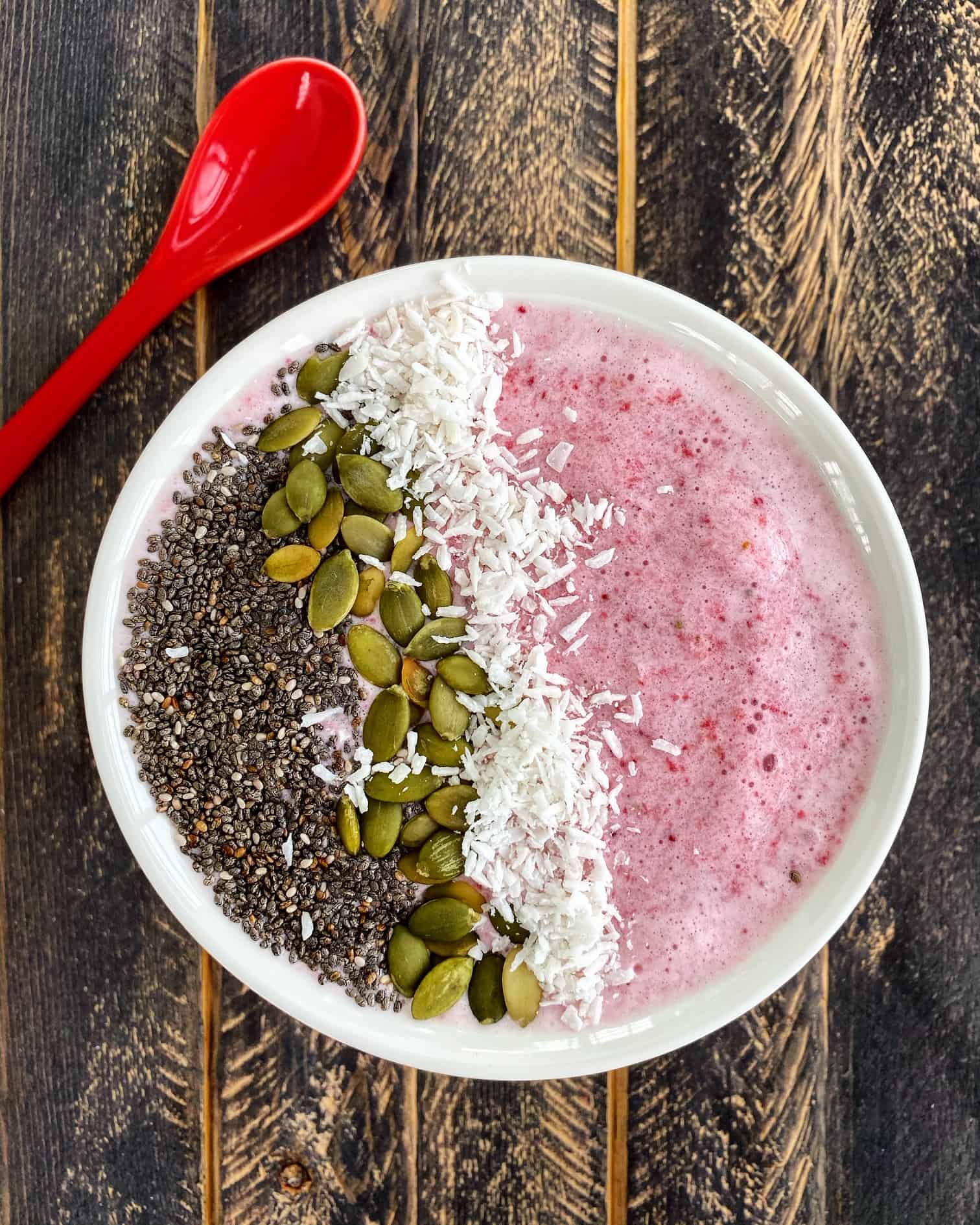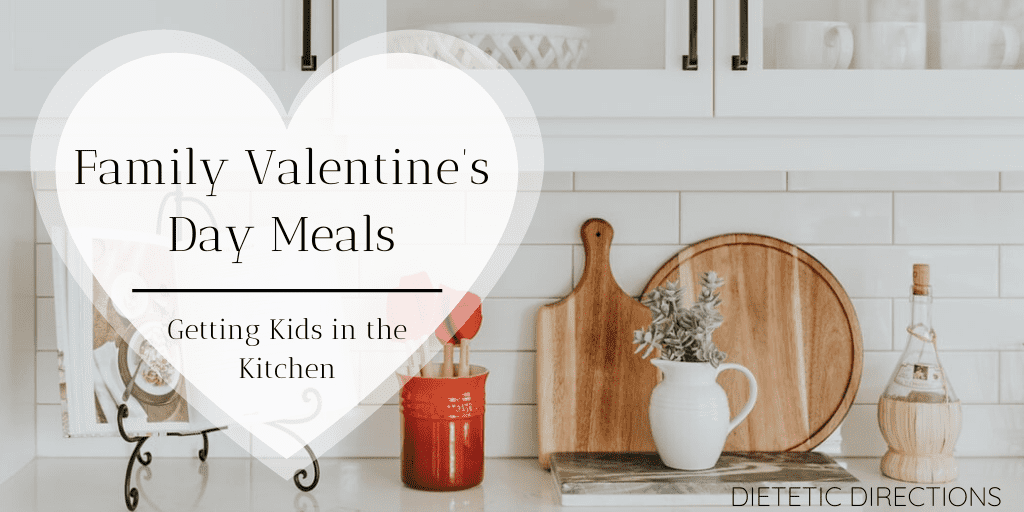
Family Valentine’s Meals
February 14th marks Valentine’s Day, where love is celebrated, particularly during those special Valentine’s Meals. It’s also a time where heartfelt messages are shared – perhaps to a partner, a child, an elder, a teacher or a neighbour. Although we don’t need a designated day to be loving and thoughtful, celebrating our dearest relationships is wonderful. Similarly, have you thought of how food can bring people together, especially parents and children in their busy lives? Or how teaching others how to cook (food skills) can be the gift that keeps giving?

Today, I will take a family-swing on Valentine’s meals by showing how we can lovingly involve our kids in making meals for this festive day. This involvement in preparing meals is known as food skills, or a set of skills necessary to prepare safe, nutritious and culturally acceptable meals for members of one’s household.
Additionally, I will highlight the health and nutrition benefits of kids cooking and how families can get started with three kid-friendly Valentine’s recipes. Nevertheless, fostering food skills in our children is increasingly vital at a time where we’re inundated with processed meals, cooking less at home and disappearing family meals.
This post was sponsored by the Egg Farmers of Ontario and Dairy Farmers of Ontario, as always, all opinions are genuine.

Benefits of Children Involved in Cooking
Children welcomed into the kitchen to help prepare meals reap numerous benefits:
- They’re more likely to try new foods.
- Helping with meals improves nutrition intake.
- Cooking develops vocabulary, math skills, fine motor skills, and reading skills.
- Meal prep increases confidence to prepare meals/snacks as they get older.
- Cooking supports a positive food relationship.
- Finally, cooking enhances family bonding by spending time together.
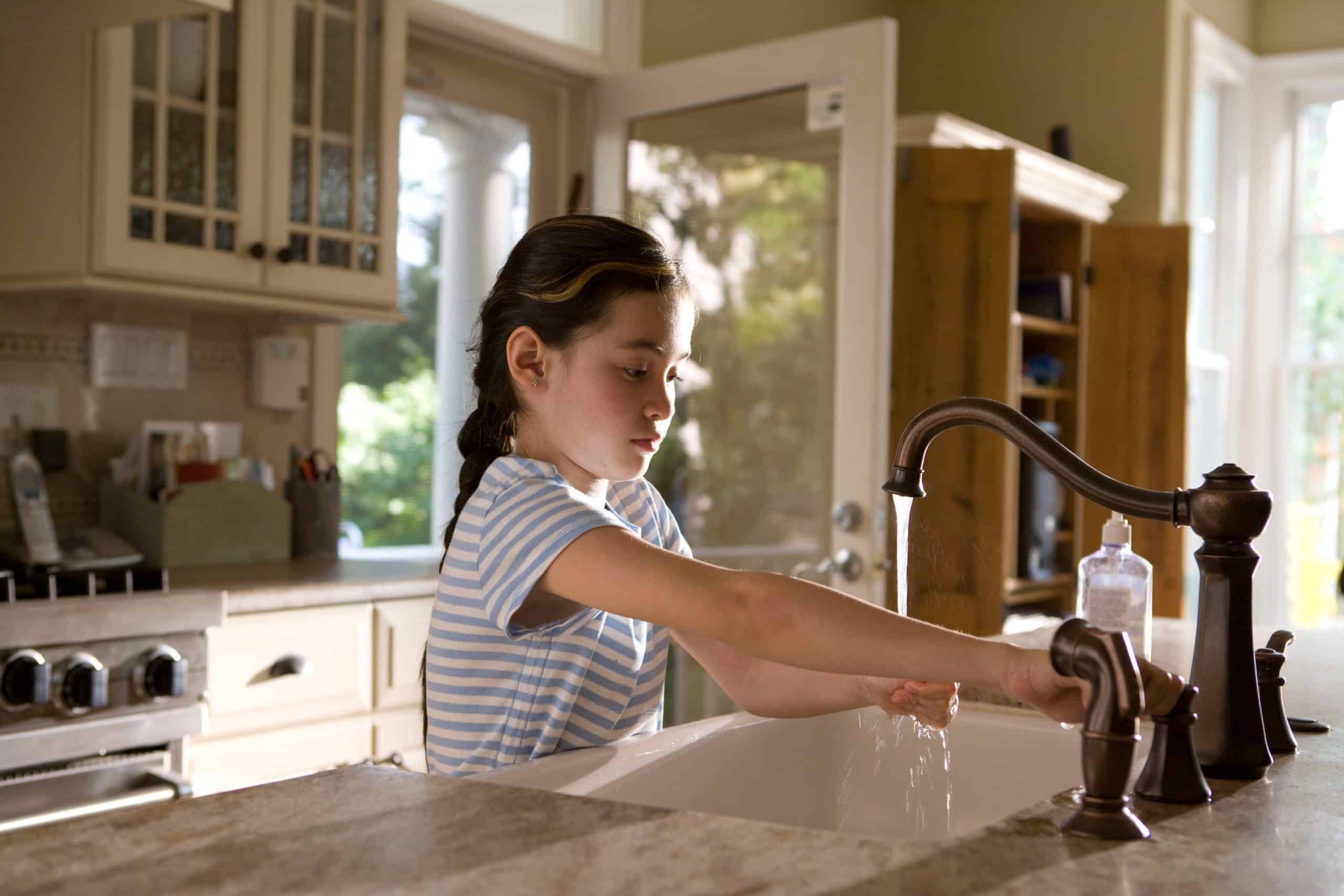
Without further ado, let’s give a warm embrace to three Valentine’s Meals (breakfast, lunch and dinner) recipes to build food skills. Before you know it, your kids will be making these recipes on their own! For each meal idea, I will break down how to make it, how to involve your child, as well as key nutrition notes.
1. Valentine’s Meal – Breakfast: Strawberry Banana Smoothie Bowl
Smoothie bowls are super trendy right now. Just look on Instagram or Pinterest and I’m sure you’ll see bright and cheerful smoothie bowls dazzled with unique toppings. I love smoothie bowls for getting kids in the kitchen because they’re nutritious, use minimal ingredients and are completely customizable. Therefore, children can measure ingredients, decorate their smoothie bowls and enjoy a healthy breakfast or afternoon snack.
How to Make a Smoothie Bowl:
- Add 1 cup of milk – I use 1% milk and this provides 8 grams of protein and 30% of our daily calcium for bone strength. Milk also gives us that amazing smooth texture. Many clients ask when they can transition their kids to a low-fat milk (like 1% or skim); the answer is after age two.
- Choose 1 cup of fruit (or a mix of different types of fruit). For more adventurous eaters, add veggies (like spinach) for added colour and vitamins.
- Option: Add ½ cup of Greek yogurt for added protein and calcium.
- Blend on low to medium-high until ingredients are smooth and at desired thickness. Can add more milk to thin the consistency, if preferred.
- Pour smoothie into a small, wide bowl.
- Add your favourite toppings (see ideas below) and enjoy together!

Why Do We Need Calcium?
Both children (and adults) need adequate calcium to maintain/build strong bones. Our bones give our bodies shape, protect our organs, and attach to muscles so we can move. Interestingly, our bones contain almost all of the calcium in our bodies. Since our bones are alive, they are constantly breaking down, releasing minerals and depositing calcium to make new bones. If we don’t achieve adequate calcium through our diet (or supplements), our body pulls calcium from our bones to maintain calcium in our blood and muscles. This is why we want to ensure we’re meeting dietary calcium requirements. This is also why I support milk as an important part of a healthy, balanced diet for all ages. Milk contains 15 essential nutrients such as magnesium, vitamin D and phosphorus which support calcium absorption. For those with lactose intolerance or FODMAP digestive sensitivities opt for lactose-free options.
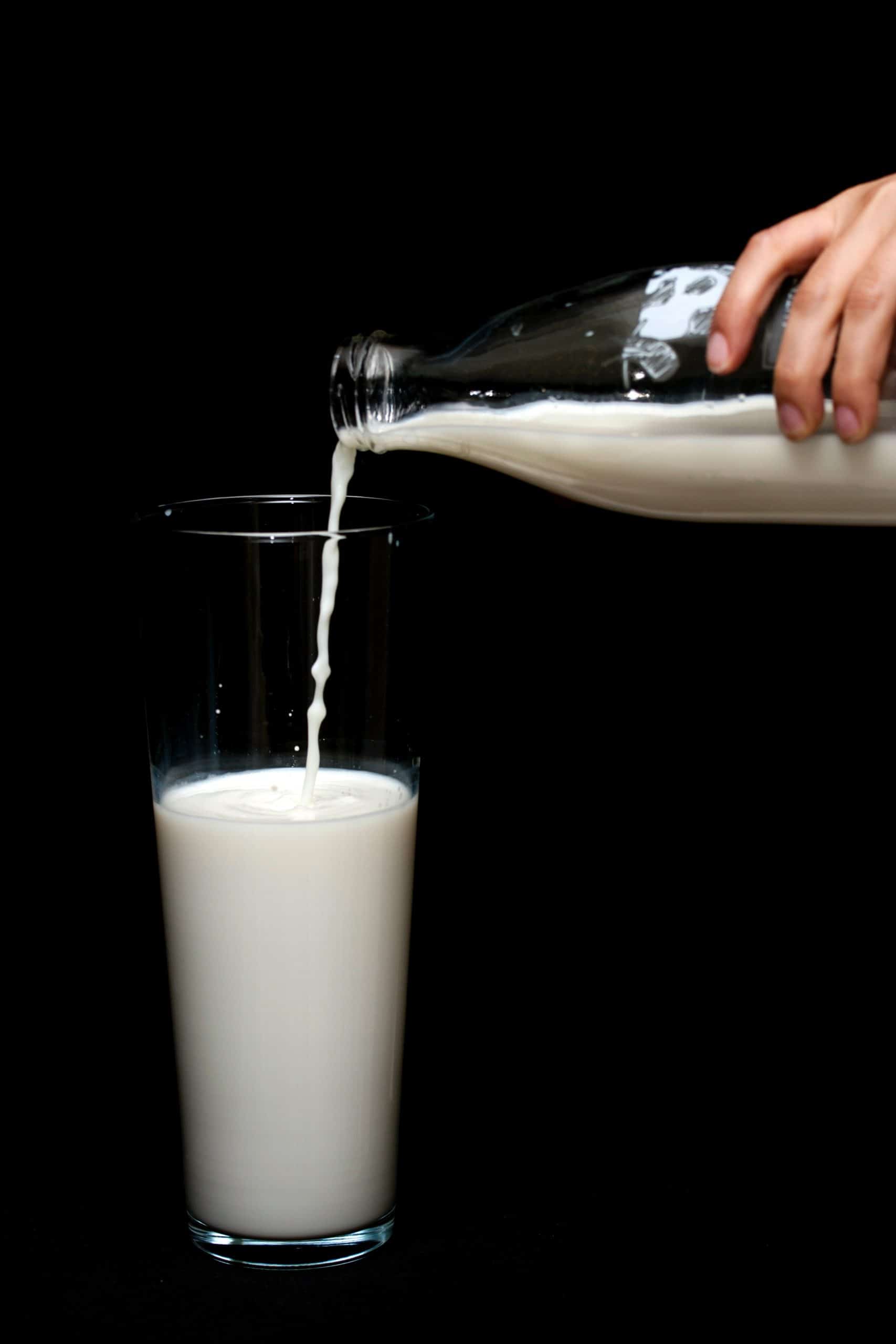
DYK? We cannot build bone mass after our 20’s. Therefore, children need bone-building, calcium-rich foods in order to achieve their maximum bone density before adolescence.
Additionally, adults need to consume adequate calcium to maintain their existing bone mass (or prevent weakening of bones).
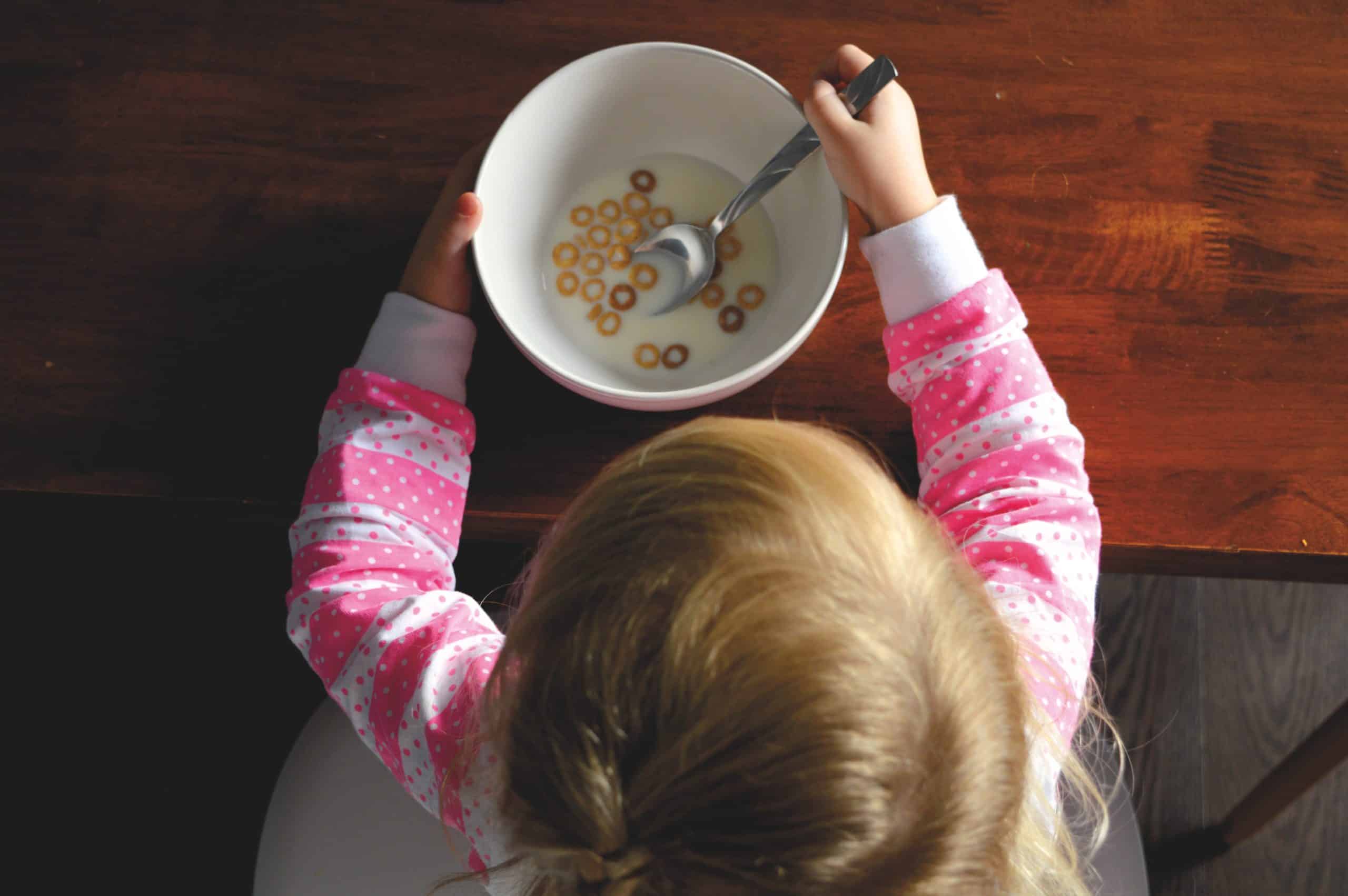
Milk in Ontario is 100% free of antibiotics and artificial growth hormones. Look for the blue cow logo when buying milk to ensure it’s Canadian. Additionally, consider speaking with your dietitian if you do not know whether you are meeting your calcium requirements.
Click here for more examples of calcium-rich, bone-building foods.
Child Involvement in Smoothie Bowl Recipe (with varying parental involvement):
- Choose the fruit(s) – Ask which fruits they would like to include. To ease decision-making, try giving two options: “Would you like to make a strawberry banana smoothie or a mango orange smoothie?”
- Measure the fruit and measuring the milk
- Add fruit and milk ingredients to blender. Closing lid and pressing button for low/medium speed
- Pour smoothie ingredients to a bowl.
- Add/choose their toppings
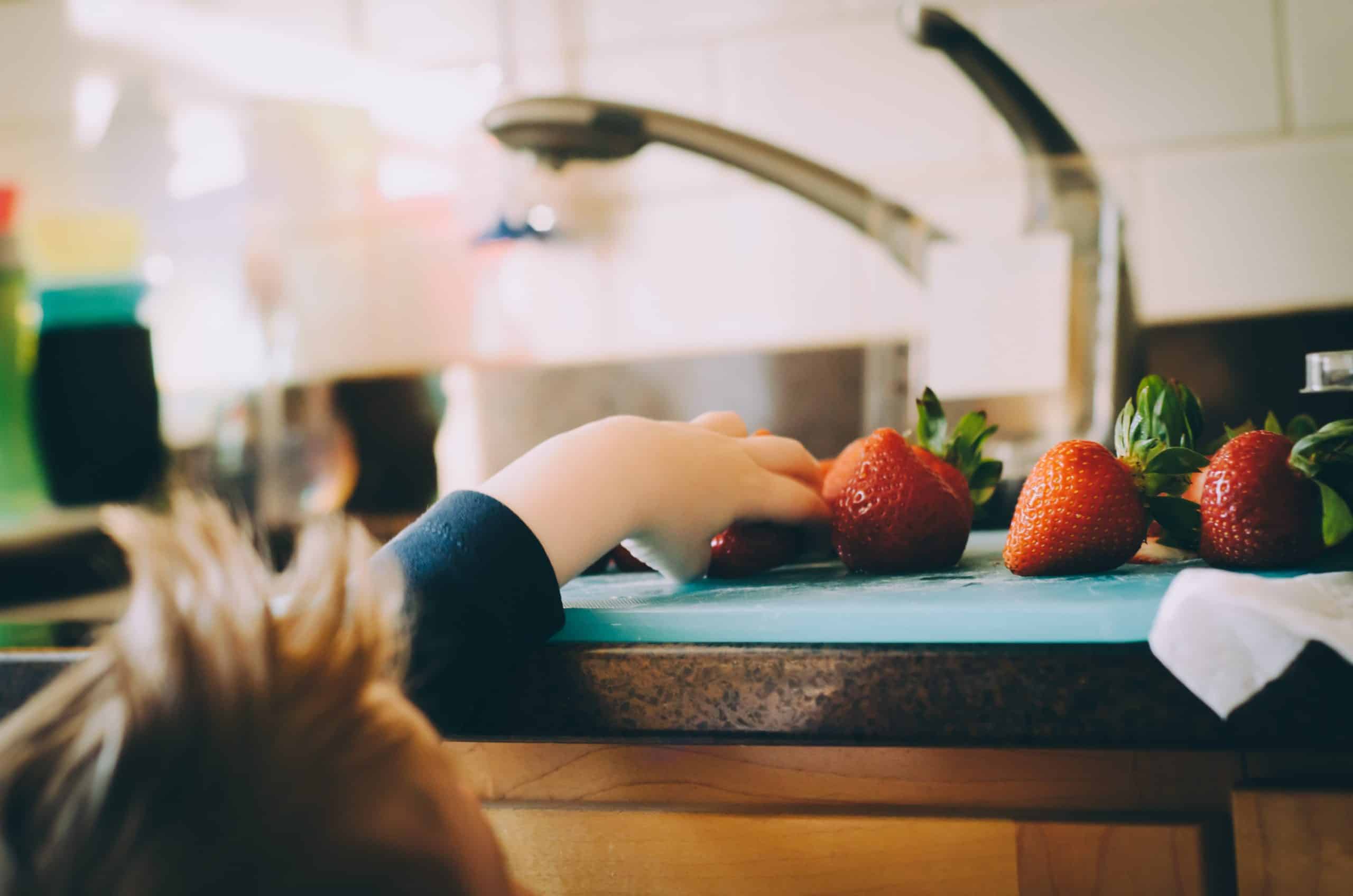
Parental Involvement:
- Create a safe environment for cooking (minimal distractions and parental observation).
- Have necessary foods and equipment (blender, measuring cups, toppings).
- Offer assistance and encouragement.
- Enjoy the finished product together.

Breakfast: Smoothie Bowl Toppings
- Unsalted nuts/seeds (slivered almonds, pumpkin seeds, sunflower seeds, hemp hearts (healthy fat and protein-booster)
- Chia seeds or flaxseeds (fibre boosters)
- Unsweetened coconut (flavour booster and added texture)
- Fresh fruit or berries (source of fibre and extra vitamins/minerals)
- Peanut or alternative nut butter (protein and healthy fats)
Dietitian Tip: Include fibre boosters, protein sources and healthy fats as Smoothie Bowl Toppers!
Valentine’s Meals Theme
To get kids excited about being in the kitchen, utilize food themes as ways to focus the meal. For Valentine’s Day, think pink, red and lots of hearts. You can ask them which fruits to include to make their smoothies pink or red. Perhaps a Strawberry Banana Smoothie or a Cherry Banana Smoothie? Adding themed straws or napkins are also fun ways to build on the festiveness.

For more meal-theme inspiration, check out my blog, 15 Fun (& Unique) Meal Themes.
2. Valentine’s Meal – Lunch: Cinnamon French Toast with Heart Strawberries
Next on the Valentine’s Day menu, we have lunch! Cinnamon French Toast with Heart Strawberries. I chose this meal because French Toast is ideal for getting kids cooking! It’s relatively simple and uses basic ingredients we generally have on hand (bread, eggs, milk). I love using Ontario eggs because they’re a nutrition powerhouse with 6 grams of protein per egg and only 70 calories. We also receive choline that’s good for brain functioning, lutein for eye-health and leucine that’s essential for our muscles.

French Toast inspires us to think outside the box of traditional breakfast foods by having it for lunch or dinner! Leftover French toast is perfect in a lunchbox with yogurt and fresh fruit. The best part? Besides the delicious taste, we can enjoy a nutritionally balanced meal on the table in under 20 minutes. This meal falls under the “Breakfast-For-Dinner/Lunch” meal theme from my 15 Unique Meal Themes blog.

Foodie Dietitian Tip: Choose French Toast toppings such as Canadian maple syrup, fresh/frozen fruit, nuts/seeds, raw oats, plain Greek yogurt, etc.
How to Make Cinnamon French Toast:
- Beat 4 eggs in a medium-sized mixing bowl. See my Classic French Toast recipe for specifics on serving sizes.
- Add 1 tsp cinnamon, brown sugar, a sprinkle of Kosher salt, fresh ground pepper and ¼ cup of milk to the whisked eggs.
- Melt butter/margarine on a fry pan on medium-high heat.
- Dip bread into the egg mixture and turn pieces to coat both sides evenly.
- Place egg-mixture-coated bread onto fry pan and cook until golden brown – about 2-3 minutes per side.
- Serve with your choice of toppings. You can cut into French Toast fingers for dipping or use a heart-shaped cookie cutter for fun shapes. You can also cut strawberries into heart-shapes or roses for toppings that the kids will love.
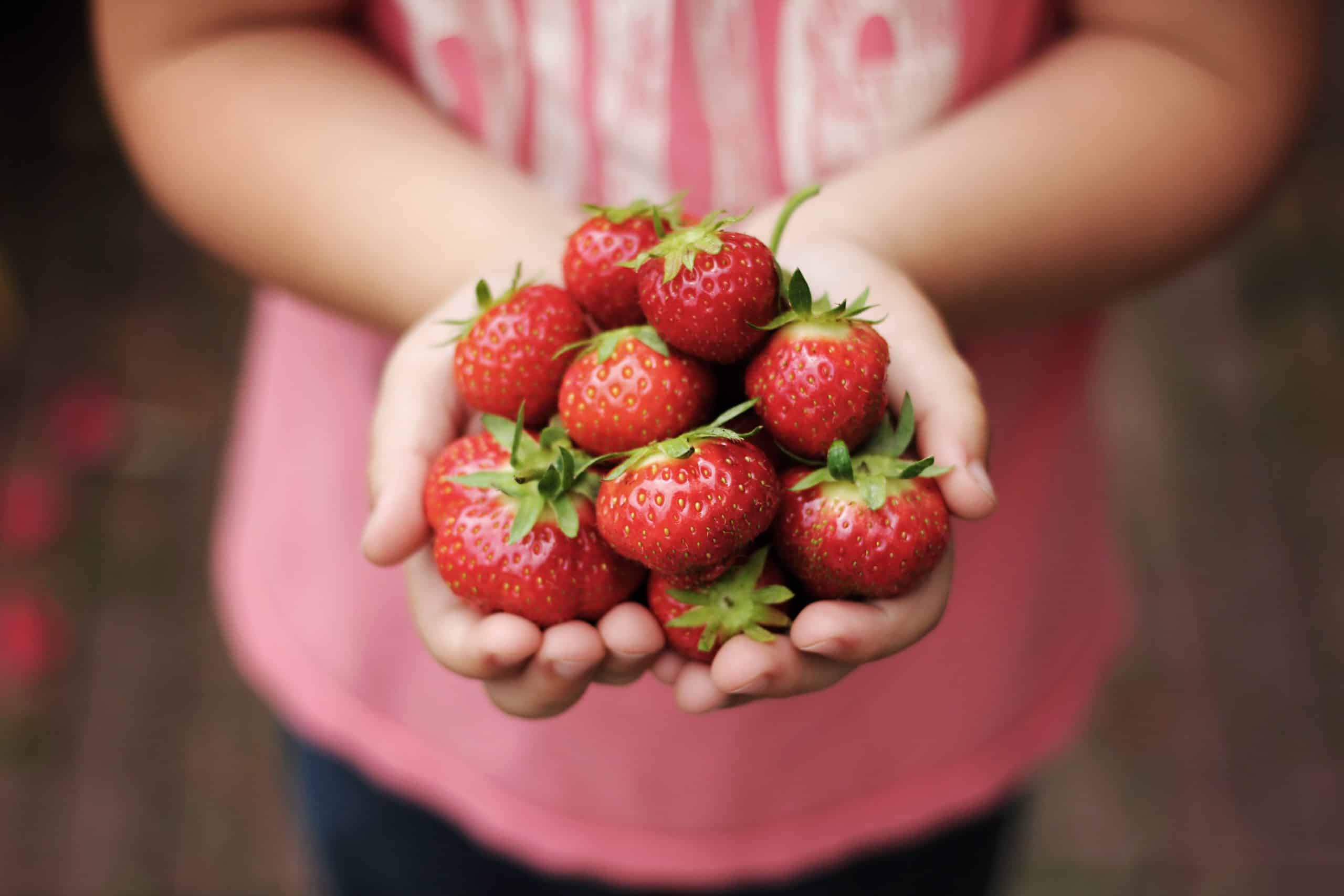
Child Involvement in French Toast Recipe (with varying levels of parental involvement):
- Crack eggs. Beat eggs with a whisk or fork.
- Read recipe together.
- Measure cinnamon, brown sugar and milk to add to eggs.
- Wash hands before and after mixing ingredients and handling food.
- Dip bread into the egg mixture.
- Add desired toppings.
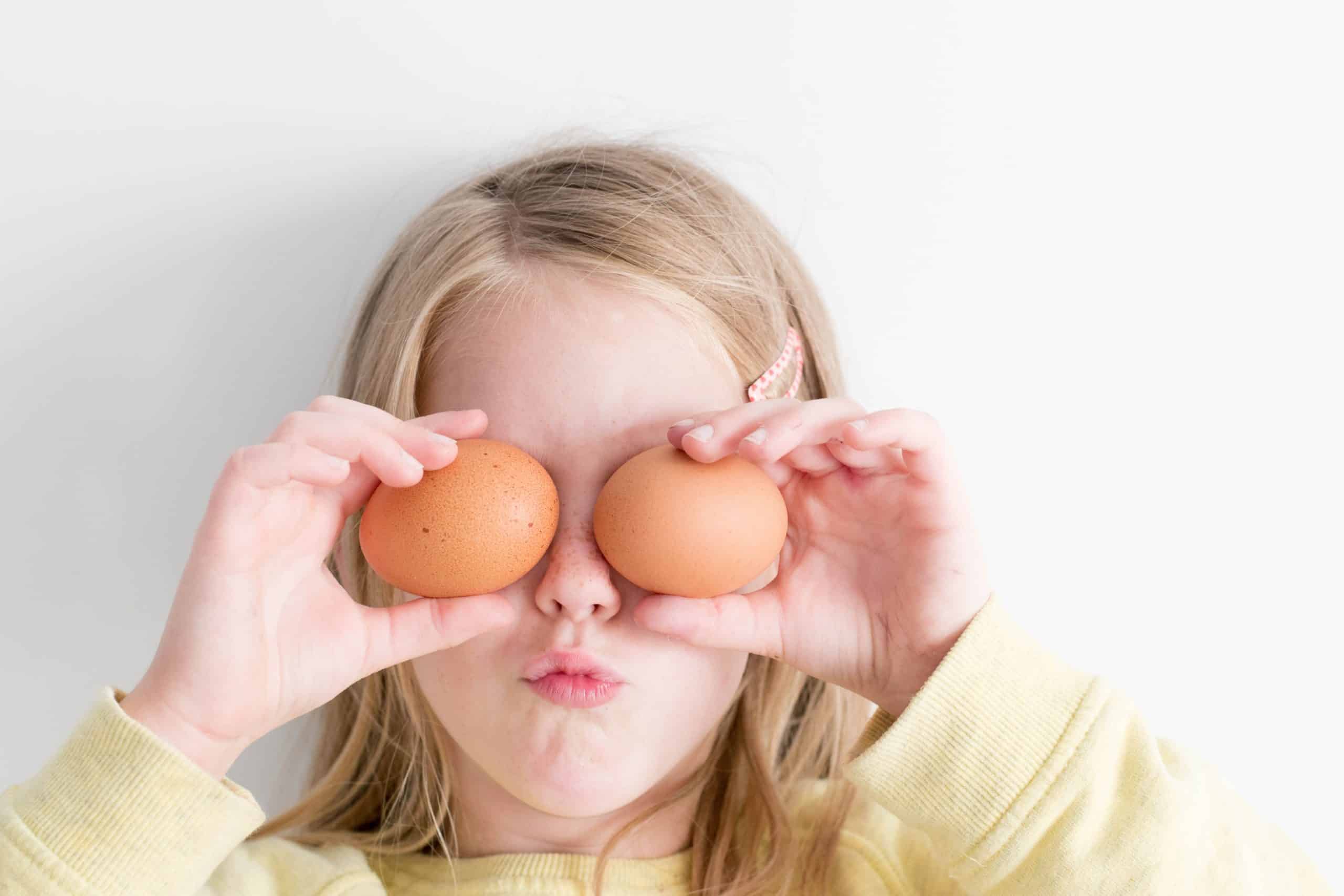
DYK? Ontario eggs go from the farm to the grocery store in 4 to 7 days!
Parental Involvement:
- Create a safe environment for cooking (minimal distractions).
- Prepare all necessary foods and equipment (frying pan, measuring cups, toppings).
- Use stove and cook French Toast (depending on the child’s age and skill level).
- Observe and assist/encourage.
- Enjoy the finished product together!

Dietitian Tip:
Making French Toast reminds us to not skip the yolk, where we receive half the protein and most of the nutrition such as choline for brain/memory, healthy pregnancy/breastfeeding and heart-health. We also receive antioxidants in the yolk like lutein and zeaxanthin, which are forms of vitamin A (carotenoids) that help reduce the risk of macular degeneration that can lead to blindness.
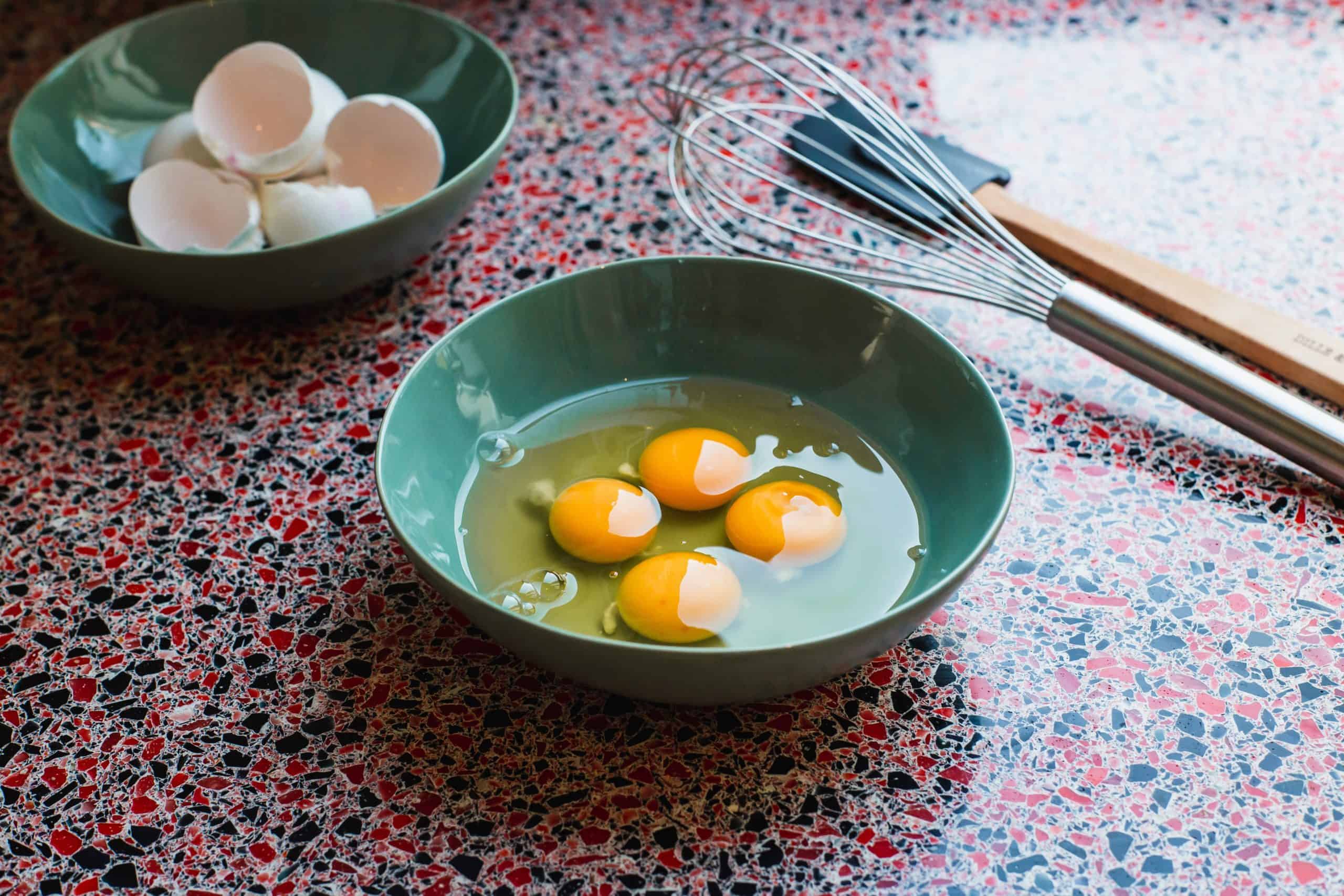
Valentine’s Meal Food Theme
To make our French Toast Valentine’s Day-themed, think of adding pinks and reds or flowers to the presentation. For example, incorporate red fruits (raspberries, strawberries or cinnamon apples) into your recipe. If you want to get more creative, top with heart-shaped strawberries or rose-shaped strawberries (see video below). If we want to get even extra fancy, use a cookie cutter to create heart-shaped French Toast pieces. Coloured napkins or pink/red utensils also add festive fun. We could even add a chocolate drizzle on our French Toast for a finishing touch. If you are concerned about having your children enjoy sugary treats, be sure to check out my blog, Why Parents Must Stop Restricting Halloween Candy.
3. Valentine’s Meal – Dinner: Caprese Pasta
Now that we have our kids involved in making breakfast and lunch Valentine’s meals, we can now move on to a delectable dinner idea. With busy family schedules, I am all about saving time and reinventing dinner into (lunch) leftovers (in addition to cooking a meal once that you can eat twice or three times). Therefore, I chose a simple Caprese Pasta that can be served warm for dinner and enjoyed cold for a lunch the next day.
Caprese salad is a simple Italian salad, made of sliced fresh mozzarella or bocconcini, tomatoes, and basil. It’s traditionally seasoned with salt and olive oil, occasionally paired with arugula. Fun fact – I didn’t realize this before, but this salad has all the colours of the Italian flag!
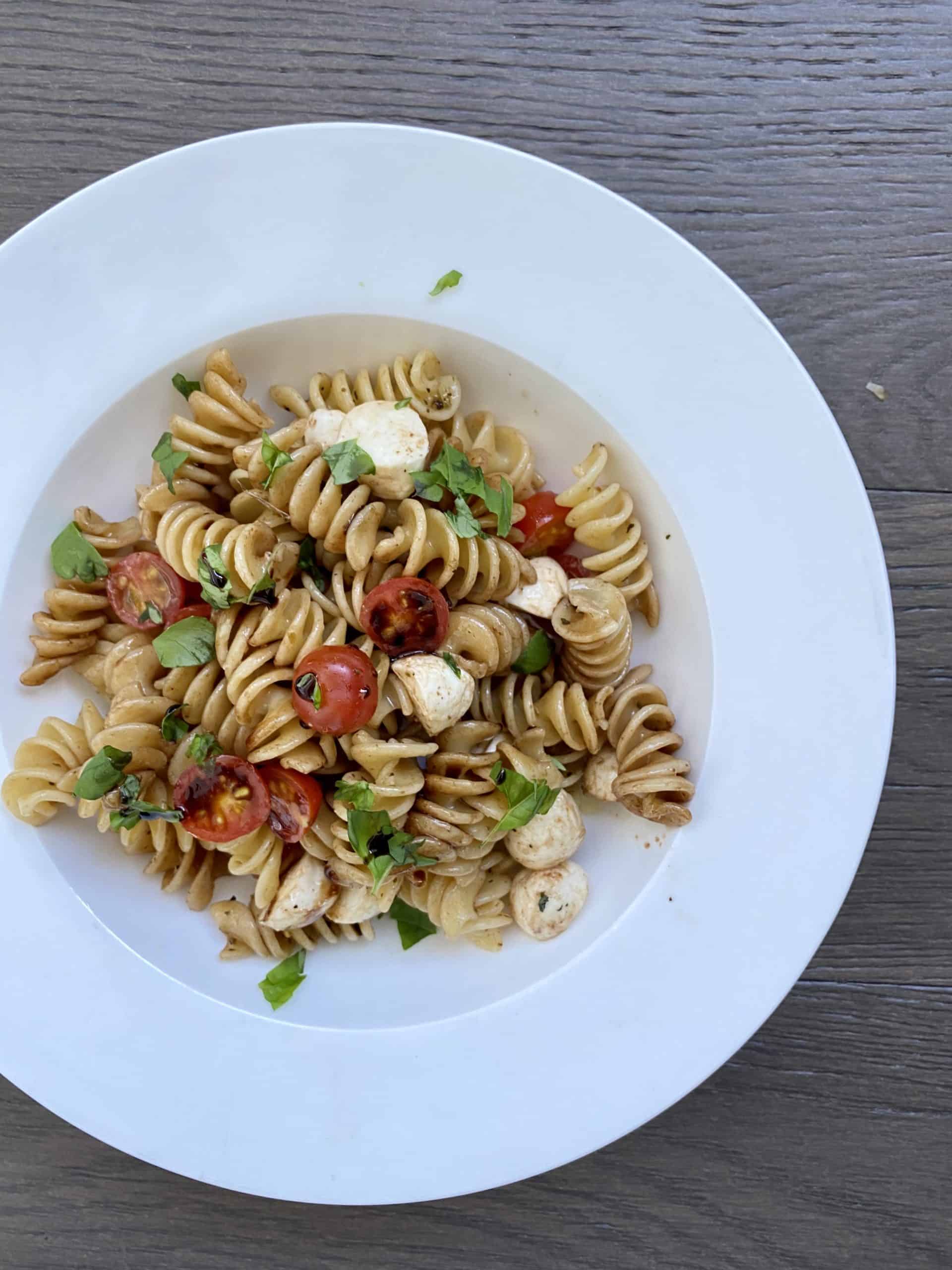
If you are looking for more lunch-box inspiration see my related blog posts here, here and here.
Dietitian Tip: With this flexible Caprese Pasta you can add more protein with grilled chicken, veggie ground, sausage or extra veggies like spinach or diced bell peppers. Using whole grain pasta offers additional protein as well.
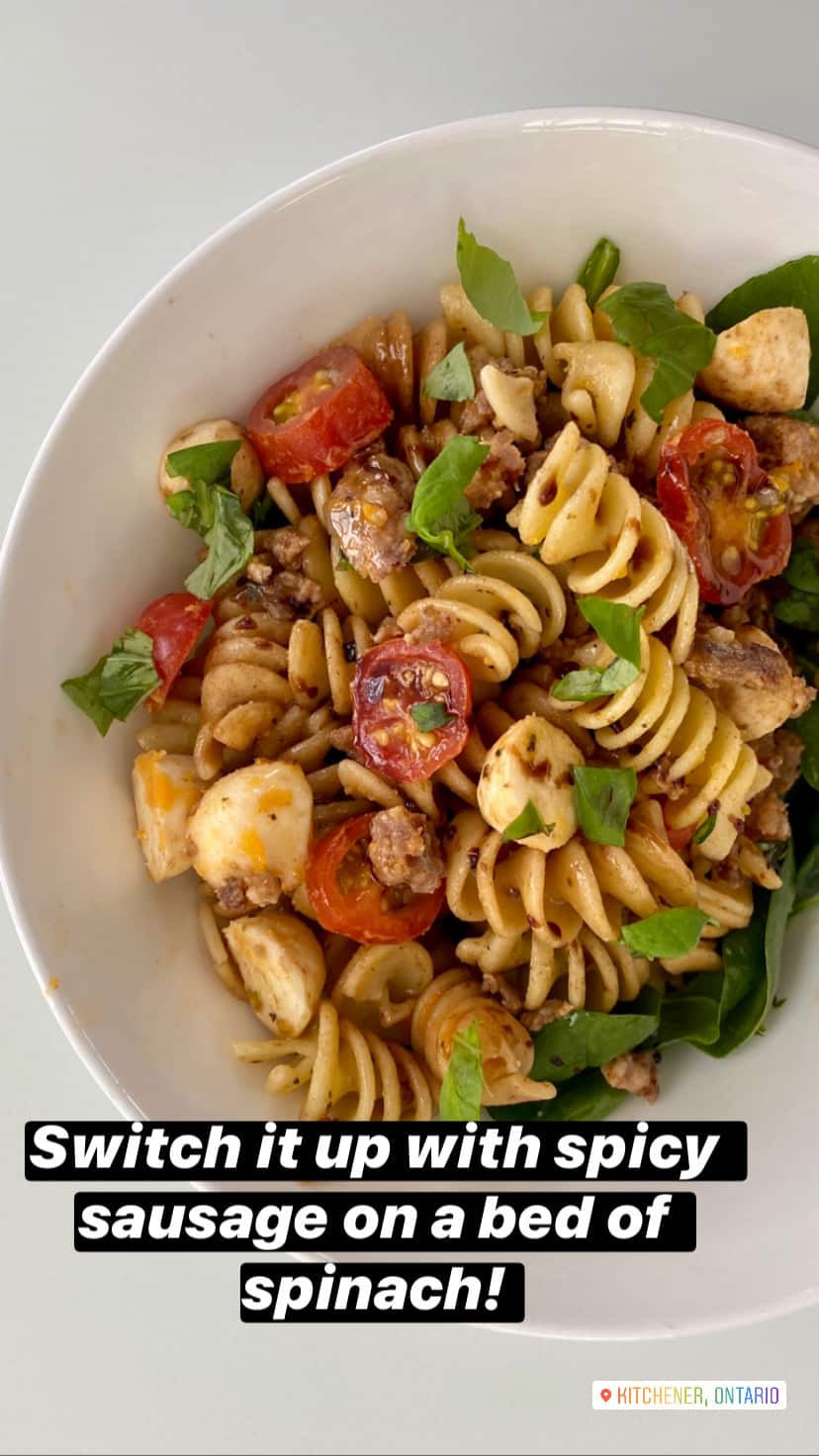
How to Make Caprese Pasta
- Cook dry pasta (~350 grams) in salted water, drain and set aside.
- Measure 1/4 cup olive oil and two tablespoons of balsamic vinegar. Pour over pasta.
- Add bocconcini and halved cherry tomatoes and torn basil.
- Toss pasta and a pinch of oregano, basil and kosher salt.
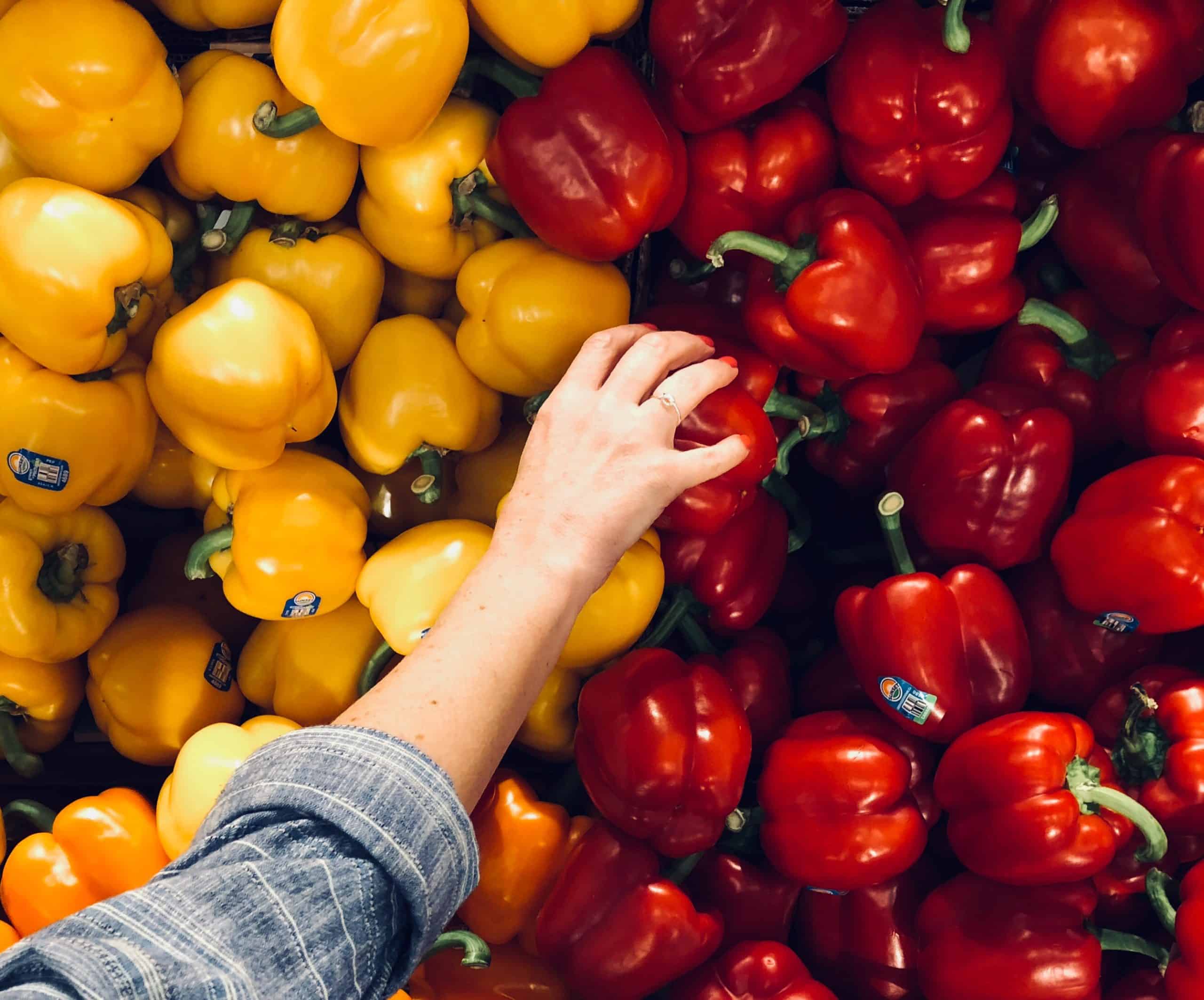
Child Involvement in Caprese Pasta Recipe (with varying levels of parental involvement):
- Cut 1 pint of cherry tomatoes in half or quarters.
- Measure 1 cup of bocconcini and drain excess liquid.
- Tear or chop 1 cup of fresh basil into pieces.
- Measure ¼ cup of olive oil and 1 tbsp of balsamic vinegar.
- Invite your child to help with pasta tasting to learn how to determine doneness.
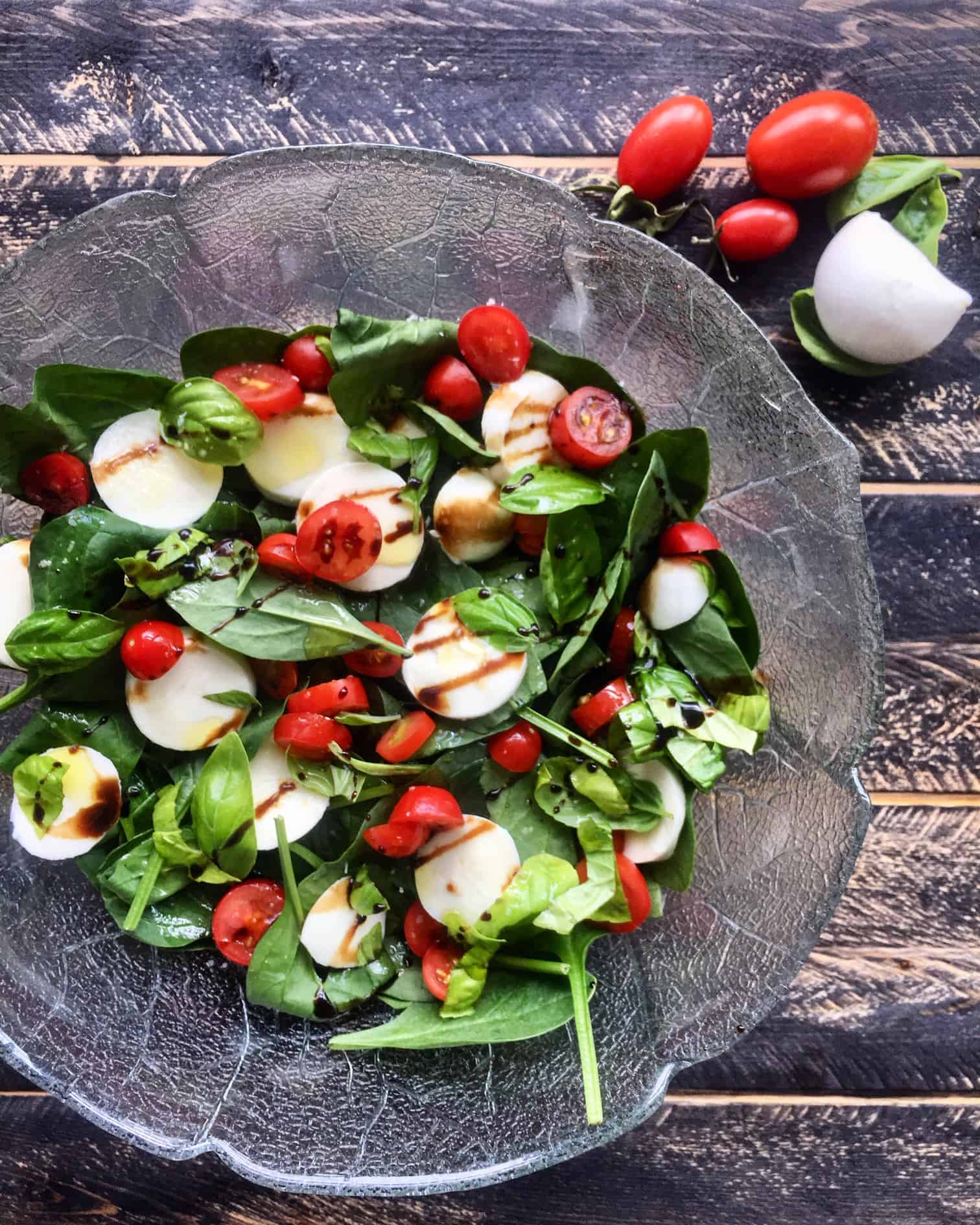
Parental Involvement:
- Boil water and cook pasta.
- Adjust seasoning with salt, pepper and vinegar after tasting.
- Create a safe environment for cooking (minimal distractions).
- Prepare all necessary foods and equipment (pots, pan, measuring cups, toppings).
- Observe and assist/encourage.
- Enjoy the finished product together!

Valentine’s Meals Food Theme
We are keeping with the red-coloured theme for our Caprese Pasta meal with tomatoes. Consider using coloured plates, napkins and utensils. Can also make heart-felt notes to put beside dinner plates.
How to Keep Kids Coming Back to the Kitchen:
- Continue welcoming them! Roll out the welcome mat and invite your kids to help. If you are able to involve them once or twice a week, this can make a huge impact!
- Start simple: This is necessary to build basic kitchen skills. Therefore, try including your child in washing vegetables, stirring, reading recipes, mashing ingredients, sprinkling ingredients or scooping.
- Keep Positive Vibes for Confidence-Building! While building your child’s food skills we want to create a low-pressure, upbeat environment and offer increasingly complex tasks as their skills improve. This allows your child to progress with mastery and confidence with cooking.

Bottom Line:
Preparing meals together for Valentine’s Day is an ideal opportunity to give children the gift of food skills. Additionally, developing your children’s food skills fosters the ability to make foods for themselves, leading them to be less reliant on processed, convenience foods and more likely to try new foods. This is truly the gift that keeps giving, yielding more diverse and nutritious diets, positive food relationships and increased confidence to cook later in life. Utilize Valentine’s Meals to inspire creativity and fun. This Valentine’s Day, try making Smoothie Bowls, Cinnamon French Toast and a Caprese Pasta together for meals and leftovers.

Now it’s your turn! How do you involve your kids in the kitchen? Any fun activities or advice you’d recommend? Do you have any childhood memories of being welcomed to help out with meals?


In case you missed it! Here’s Andrea on CHCH Morning Live and CTV Kitchener giving tips for family Valentine’s meals!


